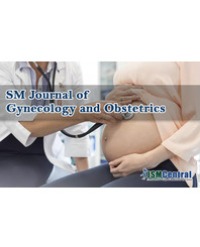
A case-control study on risk factors of breast cancer in 2 hospitals in Douala
Background:
Breast cancer is the most common malignancy and the leading cause of cancer death in Cameroonian women. There are several risk factors (modifiable and non-modifiable) involved in the genesis of breast cancer. Knowledge of these risk factors is crucial for prevention. The objective of this study was to identify factors associated with the occurrence of breast cancer in two hospitals in Douala, Cameroon.
Methods:
We conducted a case-control study over a period of 6 months at the Douala General Hospital and Laquintinie Hospital of Douala. The study compared sociodemographic, clinical and lifestyle data of 123 women and men with histologically proven breast cancer (cases) to those of 246 women and men without breast cancer (controls). Cases and controls were matched according to age and sex. After obtaining informed consent, data were collected and analyzed with SPSS version 23.0. We used Chi-square and Fisher’s tests to find the associated factors expressed as odds-ratios in their 95% confidence intervals with a significance level P <0.05. In order to eliminate confounding factors, a multivariate analysis was performed.
Results:
The mean age at diagnosis of breast cancer was 46 ± 10.58 years (range 23 to 76 years). The most common histologic type was invasive ductal carcinoma. The tumor was diagnosed at stage III of WHO classification in 41.47% of cases. Per our multivariate analysis, independent factors associated to the occurrence of breast cancer includes a monthly income of > 400.000 Francs CFA (aOR:7.135[1.529-33.301]; p:0.012); late menopause (aOR:5.351[1.226-23.351]; p:0.026); family history of breast cancer (aOR:2.776[1.050-7.340]; p:0.040); obesity (aOR:2.122[1.147-3.828]; p:0.017); alcohol consumption (aOR:2.735[1.504-4.973]; p:0.001); chronic stress (aOR:3.014[1.335-6.805]; p:0.008).
Conclusion:
Patients with breast cancer are often young and diagnosed at late stages. Some modifiable risk factors associated with breast cancer include alcohol intake, stress, obesity, high monthly income. Clinicians should consider these factors when advising patients, and they should screen for breast cancer in order to decrease the incidence of late-stage at diagnosis.
Tchente Nguefack Charlotte¹, Ymmata Sonhafouo Merciel Jordane², Essome Henri³, Ekono Michel Roger Guy⁴, Eloundou Albertine⁵, Maison Anne Marthe⁶, Bongoe Adamo⁷, and Mboudou Emile Télesphore⁸*

